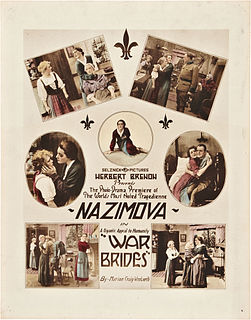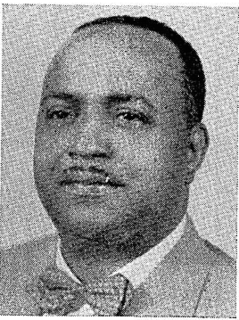Related Research Articles
The Motion Picture Associationfilm rating system is used in the United States and its territories to rate a motion picture's suitability for certain audiences based on its content. The system and the ratings applied to individual motion pictures are the responsibility of the Motion Picture Association (MPA), previously known as the Motion Picture Association of America (MPAA) from 1945 to 2019. The MPA rating system is a voluntary scheme that is not enforced by law; films can be exhibited without a rating, although most theaters refuse to exhibit non-rated or NC-17 rated films. Non-members of the MPA may also submit films for rating. Other media, such as television programs, music and video games, are rated by other entities such as the TV Parental Guidelines, the RIAA and the ESRB, respectively.

The Moon Is Blue is a 1953 American romantic comedy film produced and directed by Otto Preminger and starring William Holden, David Niven, and Maggie McNamara. Written by F. Hugh Herbert and based on his 1951 play of the same title, the film is about a young woman who meets an architect on the observation deck of the Empire State Building and quickly turns his life upside down. Herbert's play had also been a huge success in Germany, and Preminger decided to simultaneously film in English and German, using the same sets but different casts. The German-language film version is Die Jungfrau auf dem Dach.

The Film Classification and Rating Organization, also known as Eirin (映倫), is Japan's self-regulatory film regulator. Eirin was established on the model of the now-defunct American Motion Picture Producers and Distributors Association's Production Code Administration in June 1949, succeeding the US-led occupation authorities' role of film censorship during the Occupation of Japan. It classifies films into one of four categories depending on their suitability for viewing by minors of different ages.

Carl Frederick Zeidler was an American politician and the mayor of the city of Milwaukee, Wisconsin, from 1940 to 1942, winning election by unseating six-term Socialist mayor Dan Hoan. After just two years in office Zeidler resigned his position as mayor to enlist in the United States Navy Reserve to fight in World War II. His merchant marine ship and all hands were lost off the coast of South Africa in December 1942.

Cinema in Canada dates back to the earliest known display of film in Saint-Laurent, Quebec, in 1896. The film industry in Canada has been dominated by the United States, which has utilized Canada as a shooting location and to bypass British film quota laws, throughout its history. Canadian filmmakers, English and French, have been active in the development of cinema in the United States.

Blackboard Jungle is a 1955 American social drama film about teachers in an interracial inner-city school, based on the 1954 novel The Blackboard Jungle by Evan Hunter and adapted for the screen and directed by Richard Brooks. It is remembered for its innovative use of rock and roll in its soundtrack, for casting grown adults as high school teens, and for the unique breakout role of a black cast member, future Oscar winner and star Sidney Poitier, as a rebellious yet musically talented student.

William Harrison Hays Sr. was an American Republican politician.

Frank Joseph Marion was an American motion picture pioneer. He was born in Tidioute, Pennsylvania. He had a wife named Florence and 4 daughters and a son. He was married to Florence until her death.
In Canada, appeals by the judiciary to community standards and the public interest are the ultimate determinants of which forms of expression may legally be published, broadcast, or otherwise publicly disseminated. Other public organisations with the authority to censor include some tribunals and courts under provincial human rights laws, and the Canadian Radio-television and Telecommunications Commission, along with self-policing associations of private corporations such as the Canadian Association of Broadcasters and the Canadian Broadcast Standards Council.
Joseph Ignatius Breen was an American film censor with the Motion Picture Producers and Distributors of America who applied the Hays Code to film production.
Freedman v. Maryland, 380 U.S. 51 (1965), was a United States Supreme Court case that ended government-operated rating boards with a decision that a rating board could only approve a film and had no power to ban a film. The ruling also concluded that a rating board must either approve a film within a reasonable time, or go to court to stop a film from being shown in theatres. Other court cases determined that television stations are federally licensed, so local rating boards have no jurisdiction over films shown on television. When the movie industry set up its own rating system—the Motion Picture Association of America—most state and local boards ceased operating.
Laurence Lionel "Larry" Kent is a Canadian filmmaker, who is regarded as an important pioneer of independent filmmaking in Canada.
MMPC may refer to:

The Mayor's Office of Film, Theatre & Broadcasting (MOFTB) is the oldest film commission in the United States. It is New York City’s agency responsible for coordinating municipal support for film and television production, including approving film shoots and liaising with government agencies and promoting the industry. The office provides free permits, free public locations, and free police escorts. It also provides shooting guidelines, insurance information, and other useful information for local film and media production. Built upon mayoral initiatives dating back to Mayor John V. Lindsay in 1966 and Mayor Abraham Beame in 1974, the Mayor's Office today supports an industry that generates over $5 billion annually and employs over 100,000 New Yorkers.

The Unpardonable Sin is a 1919 American silent drama/propaganda film set during World War I. The film was produced by Harry Garson, directed by Marshall Neilan, written by Kathryn Stuart, and stars Neilan's wife, Blanche Sweet, who portrays dual roles in the film. The Unpardonable Sin is based on the novel of the same name by Rupert Hughes. The Silent Era site reports that it is not known whether the film currently survives, suggesting that it is a lost film. However, prints and/or fragments did turn up in the Dawson Film Find in 1978, so some of it at least survives.

Film censorship in the United States was a frequent feature of the industry almost from the beginning of the U.S. motion picture industry until the end of strong self-regulation in 1966. Court rulings in the 1950s and 1960s severely constrained government censorship, though statewide regulation lasted until at least the 1980s.

War Brides is a lost 1916 American silent war drama film directed by Herbert Brenon and starring Alla Nazimova. The film marked Nazimova's debut in motion pictures.

Walton Bryan Stewart was an American teacher, machinist, labor activist, and Democratic politician. He served one term in the Wisconsin State Assembly, representing part of the north side of the city of Milwaukee.
Times Film Corporation v. City of Chicago, or Times v. City of Chicago is the name of two cases decided by the U.S. Supreme Court in 1957 and 1961. Both involved the issue of limits on freedom of expression in connection with motion pictures. In both cases the court affirmed the right of local governments to engage in some form of censorship.

War As It Really Is is a 1916 American documentary war film shot, edited and distributed by Donald C. Thompson. The seven-reel film exposed American audiences to some of the most authentic sights and first-hand accounts of World War I before the United States entered the war. The film was first shown in installments at the Rialto Theatre in New York City in October 1916.
References
- ↑ Prigge, Matthew (2012). "Dangers in the Dark". Film History. 24 (1): 74–81. doi:10.2979/filmhistory.24.1.74.
- ↑ Prigge, Matthew (31 August 2011). "Banned in Cream City!". Shepherd Express.
- ↑ "Dealy Showing of Disputed Film". Milwaukee Sentinel. March 15, 1957.
- ↑ "Movie Censorship Board Sees Handwriting on the Wall". Milwaukee Sentinel. June 7, 1971.
- Prigge, Matthew J. "Dangers in the Dark: Motion Picture Reform in Progressive Era Milwaukee". Film History. 24: 74. doi:10.2979/filmhistory.24.1.74.
- Prigge, Matthew J (2012). Outlaws, Rebels, and Vixens: Six Decades of the Milwaukee Motion Picture Commission (Thesis). University of Wisconsin Milwaukee.